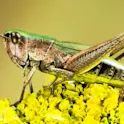1,071 news posts

Featured news
07 Aug 2019
Common food additive found to affect gut microbiota
Experts call for better regulation of a common additive in foods and medicine, as research reveals it can impact the gut microbiota and contribute to inflammation in the colon; Frontiers in Nutrition

Featured news
06 Aug 2019
Online information on how to boost immunity based on commercially biased sources
Just 12% of search engine results for “boost immunity” mentioned vaccines, the most proven and effective method of boosting immunity; Frontiers in Medicine

Featured news
29 Jul 2019
Artificial intelligence enables recognizing and assessing a violinist’s bow movements
A system developed by David Dalmazzo and Rafael Ramírez, members of the Music Technology Group, allows violin students to benefit from real-time accurate information about their movements when playing the instrument; Frontiers in Psychology

Climate action
25 Jul 2019
The geoengineering of consent: how conspiracists dominate YouTube climate science content
Most YouTube videos relating to climate change prevention oppose scientific consensus and hijack technical terms to appear credible, says study; Frontiers in Communication

Featured news
24 Jul 2019
An apple carries about 100 million bacteria. Good luck washing them off.
Most microbes are inside the apple – but the strains depend on which bits you eat, and whether you go organic; Frontiers in Microbiology

Featured news
23 Jul 2019
Are the ‘viral’ agents of MS, ALS and schizophrenia buried in our genome?
An estimated 8% of our DNA comes from viruses. Image: Shutterstock. Viruses hid themselves in your ancestors’ DNA. Now they’re waking up. — by Matthew Prior, Frontiers science writer What if the missing ‘environmental’ factor in some of our deadliest neurological diseases were really written in our genome? Writing in Frontiers in Genetics, researchers from the University of Düsseldorf explain how viruses ended up in our DNA – and what puts them in the frame in unsolved diseases like multiple sclerosis. Neural Cell Responses Upon Exposure to Human Endogenous Retroviruses► Read original article► Download original article (pdf) The enemy within? A whopping 8% of our DNA comes from viruses. Specifically, ones called retroviruses – not because they’re old, but because they reverse the normal process of reading DNA to write themselves into their host’s genome. Retroviruses are old though: they began merging with our ancestors millions of years ago. Over the millennia, most of their remnants in our DNA – known as human endogenous retroviruses or HERVs – have been silenced by mutations. Others, which had evolved to fend off rival viruses, formed the prototypical immune system and to this day protect us from infection. However, HERVs might also be the missing […]

Featured news
18 Jul 2019
Red wine’s resveratrol could help Mars explorers stay strong
Nutraceuticals that preserve muscle in reduced gravity will support long-term space missions; Frontiers in Physiology

Featured news
16 Jul 2019
Altering how cyanobacteria capture light from the Sun can impact their health
Researchers have identified a gene mutation in cyanobacteria that creates resistance to free radicals, and could be used to accelerate cell growth in biotech applications; Frontiers in Microbiology

Featured news
15 Jul 2019
Meet the six-legged superfoods: grasshoppers top insect antioxidant-rich list
Grasshoppers and silkworms have antioxidant capacity similar to fresh orange juice, says study; Frontiers in Nutrition

Featured news
04 Jul 2019
How to sell labriculture: less lab, more culture
‘High-tech’ framing may be driving negative attitudes towards cultured meat; Frontiers in Nutrition

Environment
01 Jul 2019
Young frogs that were stressed as tadpoles move less on land, putting their survival at risk
New Oregon State University research shows that juvenile northern red-legged frogs that have experienced climate-related stress as tadpoles are less likely to move on land, putting their survival at risk; Frontiers in Ecology and Evolution

Featured news
26 Jun 2019
Zero-calorie sweeteners on trial again
Exposure to sucralose and acesulfame-K in the womb and via breastmilk leads to altered intestinal flora and liver toxicity in mouse pups; Frontiers in Microbiology

Featured news
23 Jun 2019
Brain changes linked with Alzheimer’s years before symptoms appear
Brain imaging and spinal fluid analysis could help to guide the use of future preventive treatments for Alzheimer’s; Frontiers in Aging Neuroscience

Featured news
21 Jun 2019
Is one toe really better than three? How horses’ legs evolved for travel rather than speed
The real evolutionary ‘step forward’ in horse foot anatomy was not the loss of additional toes, but the evolution of the ‘spring foot’, say researchers; Frontiers in Ecology and Evolution

Environment
19 Jun 2019
Research shows cattle ranching could help conserve rare African antelope, lions
Endangered African antelope and the lions that prey on them may benefit from certain cattle ranching practices in Kenya; Frontiers in Ecology and Evolution